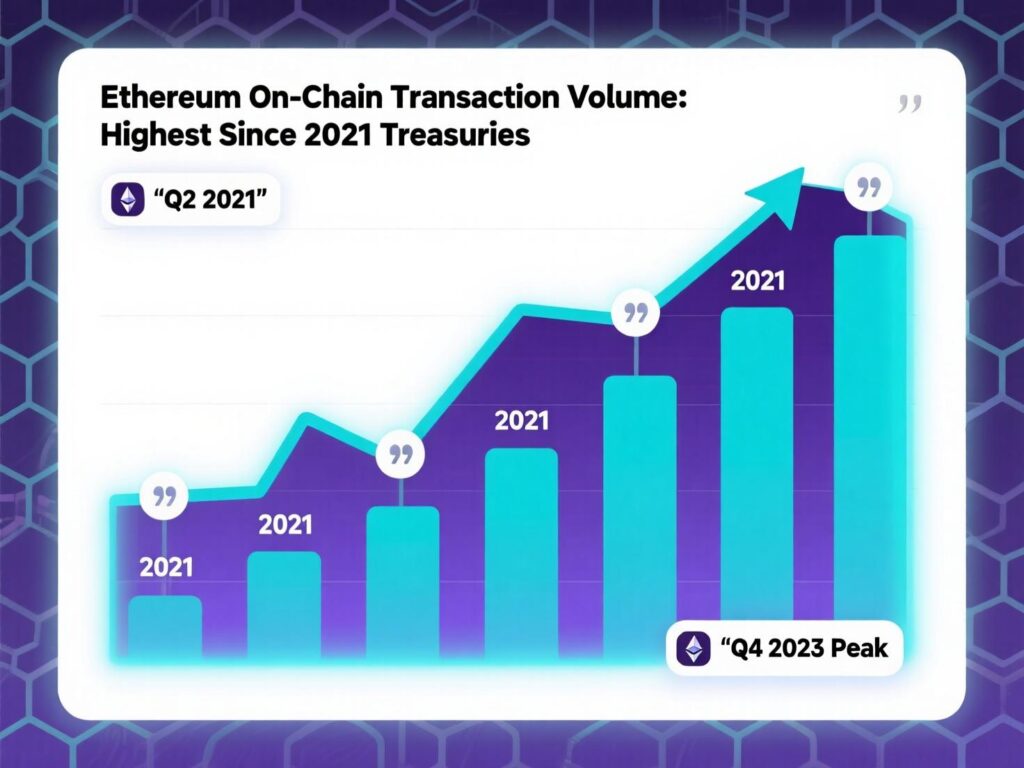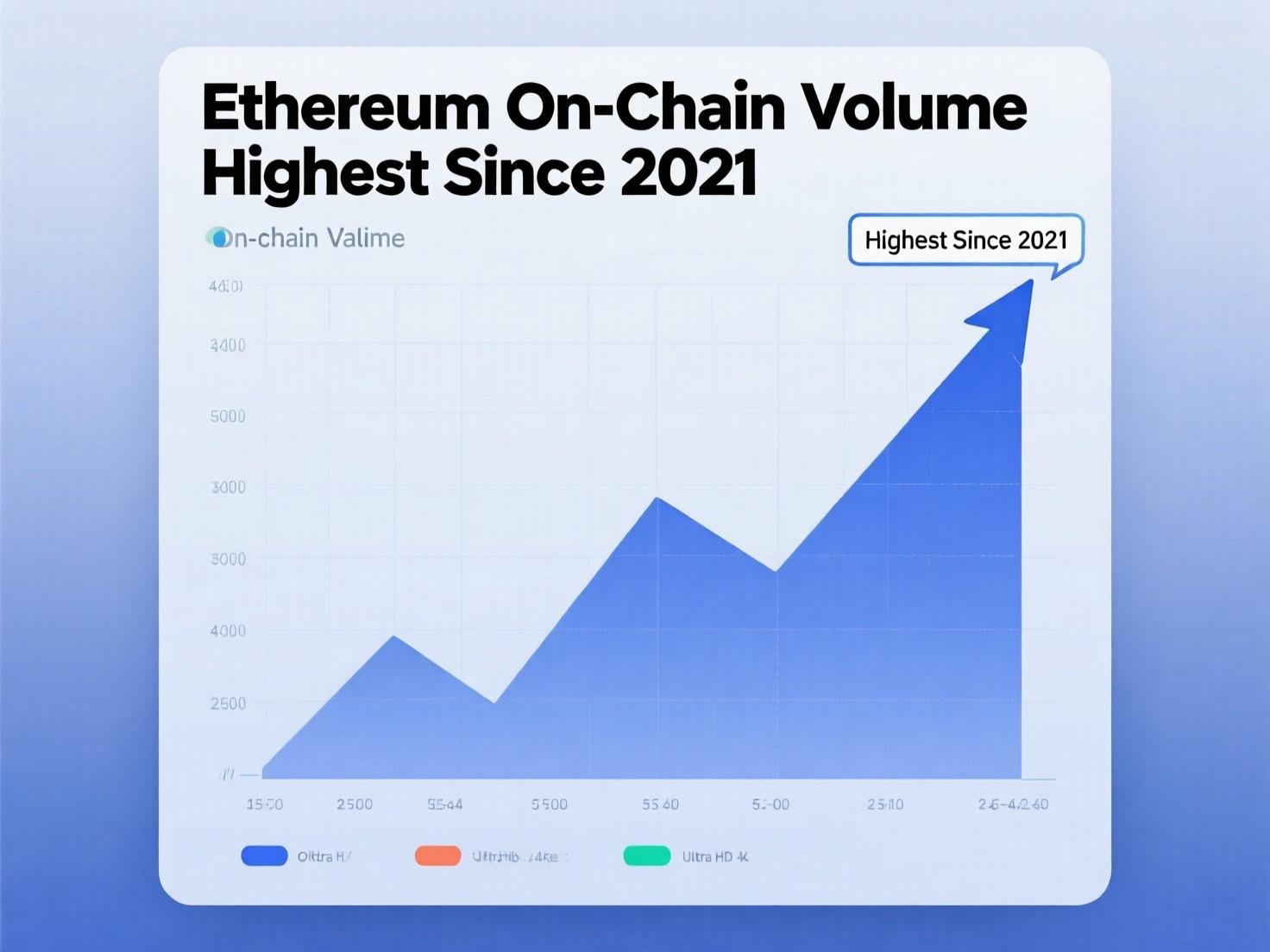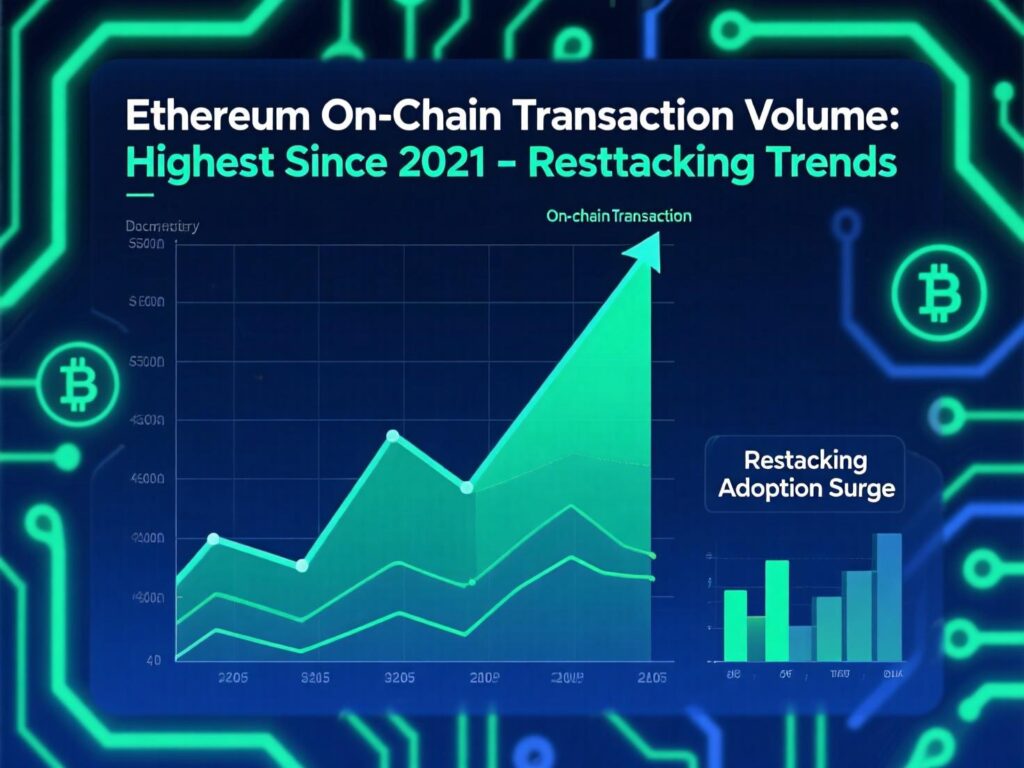Ethereum onchain volume tops $320 billion in August, highest since mid-2021
Ethereum ended August on a high note, with on-chain transfer activity reaching levels not seen since the last cycle’s peak. This wasn’t just a temporary spike network liquidity, fee revenue, and trading flows all climbed together, reflecting broader participation across the ecosystem. The increase highlighted how Ethereum continues to serve as the backbone of decentralized finance and digital asset transfers.
At the same time, institutional demand played a major role in reinforcing the network’s momentum. Higher activity paired with growing confidence from larger players positioned Ethereum as more than just a speculative asset. Instead, it signaled deeper adoption and trust in its long-term role. August ultimately became Ethereum’s busiest month for on-chain activity since 2021, underscoring its renewed strength and expanding relevance in the crypto landscape.
Why Ethereum on-chain volume highest since 2021 matters
The network’s adjusted transfer volume surpassed $320–$325 billion in August, the third-largest month on record. That momentum came alongside fresh 30-day transaction highs, the second-highest tally of monthly active addresses ever, and total value locked hovering near all-time highs. In short, Ethereum on-chain volume highest since 2021 isn’t just about one metric; it reflects broad-based participation across DeFi, payments, and staking.
Tailwinds from treasuries and ETFs
Corporate digital-asset treasuries expanded sharply, with public companies’ combined ether holdings jumping from roughly $4 billion in early August to more than $12 billion by month-end.
Spot ETH ETFs saw late-month volume spikes and persistent net inflows, with the complex now holding more than 5% of circulating supply.
These flows help explain why Ethereum on-chain volume highest since 2021 coincided with sustained buy-side interest from institutions.
Fees fell and usage climbed
Transaction costs across Ethereum are near five-year lows. The Dencun upgrade in March 2024 (EIP-4844 “proto-danksharding”) cut data fees for rollups, pushing more activity to lower-cost Layer 2s. With 2025’s Pectra release improving account abstraction, tooling, and UX, developers and users are finding it cheaper and easier to transact—another reason Ethereum on-chain volume highest since 2021 proved durable rather than a one-off spike.
Staking churn and the restaking boom
Validator dynamics added fuel. Exit requests hit record levels while entry requests reached a two-year peak. Some validators rotated capital into liquid restaking protocols to optimize yield and flexibility an onchain shuffle that amplified throughput. That shift helped keep Ethereum on-chain volume highest since 2021 as funds moved between staking, restaking, and DeFi strategies.

Market structure and cross-asset flows
Analysts at major banks argue Ethereum remains undervalued relative to its growth drivers from treasury adoption to ETF demand even as the ETH/BTC ratio strengthened this year. Meanwhile, a handful of large bitcoin holders reportedly rotated capital into ETH, reinforcing a summer narrative of cross-asset positioning. With public-sector pilots posting macro data to blockchains, Ethereum’s role as a general-purpose settlement layer has only gained visibility supporting the case for Ethereum on-chain volume highest since 2021 to be more than a headline.
Price action: strong, but shy of ATH
By Friday afternoon, ETH traded about 12% below its all-time high amid broader market chop, with intraday losses over 5%. Price wobbles aside, the network’s throughput story—Ethereum on-chain volume highest since 2021 speaks to organic demand. If fees remain muted and institutional flows persist, activity levels could stay elevated even through volatility.
What to watch next
Layer 2 growth: Continued fee compression and app launches could sustain volumes.
ETF flows: Ongoing net inflows would support liquidity and treasury accumulation.
Restaking dynamics: More migration between validators and restaking protocols may keep onchain money in motion.
Macro integration: Government and enterprise tests of onchain publishing and settlement can expand use cases, reinforcing Ethereum on-chain volume highest since 2021 as part of a longer trend.

Final Words
August sent a strong signal for Ethereum’s growth. On-chain activity climbed to its highest point since 2021, supported by deeper institutional participation, lower transaction costs, and steady staking inflows. Rather than short-term hype, these factors highlight a maturing network hitting multi-year highs with stronger fundamentals behind it.
Looking ahead, Ethereum’s next phase will depend on key drivers. Continued ETF and treasury allocations, ongoing expansion of Layer 2 scaling solutions, and consistent progress from developers will determine whether this momentum sustains. Together, these elements could push Ethereum toward its next stage of adoption and long-term strength.
FAQs
Q1 . Why is Ethereum on-chain volume highest since 2021 right now?
A : Low fees, L2 growth, ETF inflows, and corporate treasuries all aligned, pushing Ethereum on-chain volume highest since 2021.
Q2 . How did ETFs impact Ethereum on-chain volume highest since 2021?
A : Spot ETH ETFs attracted steady net inflows and liquidity, reinforcing demand that helped keep Ethereum on-chain volume highest since 2021.
Q3 . Did upgrades like Dencun and Pectra contribute to Ethereum on-chain volume highest since 2021?
A : Yes. EIP-4844 cut data costs for rollups and Pectra improved UX/tooling—both supported Ethereum on-chain volume highest since 2021.
Q4 . What role did staking and restaking play in Ethereum on-chain volume highest since 2021?
A : Validator exits/entries and shifts into liquid restaking protocols increased on-chain movements, aiding Ethereum on-chain volume highest since 2021.


